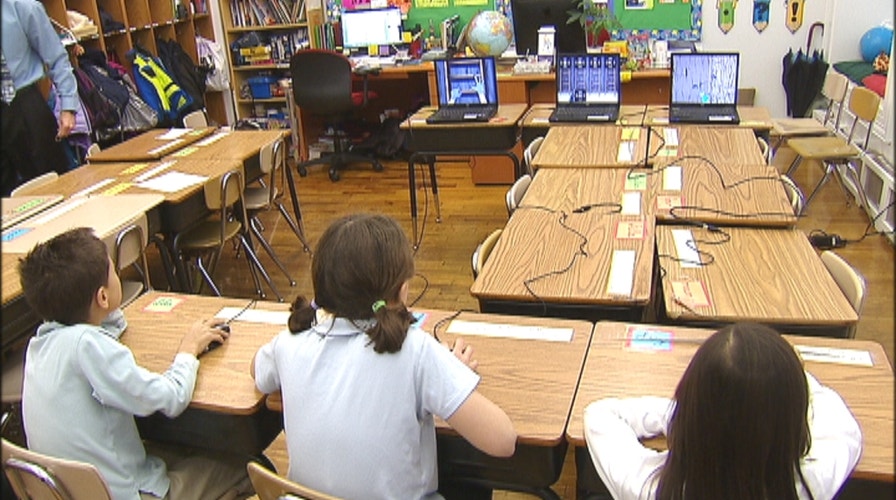Video game detects vision problems in kids
As many as one in four children are living with undiagnosed vision disorders that may be affecting their performance in school. See how a new video game is detecting vision problems right in the classroom
Technology is changing the way we view the world, and the American education system is no exception.
With as many as one in four children living with undiagnosed vision disorders that may be affecting their performance in school, it’s more important than ever for kids to get screened early.
“The school is becoming an incredibly technology-rich place, and therefore a very vision-intensive place,” said George Davison, head of Grace Church School in New York City. “Kids have to focus on Smartboards, they have to focus on computer screens, they are using tablets.”
The methods for vision screening in children hasn’t changed much in the last 150 years. Everyone remembers lining up to read letter charts while covering one eye; but these days, many American schools have cut vision testing from its budgets.
“We did do eye exams, and we stopped doing eye exams because it was too cumbersome and too time consuming for the kids, and we said we got to rely on the pediatricians, and it was too expensive for us,” Davison said. “So we still do speech and auditory screenings, but we stopped doing eye screenings because it was too much.”
Dr. James O’Neil, a pediatric ophthalmologist at Arizona Pediatric Eye Specialists said that without schools keeping tabs on students’ vision, he noticed that many children were falling through the cracks when it came to early interventions with conditions like amblyopia, or lazy eye, and focusing issues like astigmatism.
“As a parent, it's natural to think that your child can see if you don't see a problem,” O’Neil told FoxNews.com. “The issue is that some vision problems, such as using only one eye or not using the eyes together, are not obvious unless you get some kind of formal vision assessment.”
O’Neil said all too often, he found himself having to tell parents that it may be too late to fully correct vision problems, which had gone undiagnosed for years by the time they brought their children to see him. So, he decided to start a non-profit organization called VisionQuest 20/20 with the help of his friend and software developer, Richard Tirendi.
“He shared with me his frustration that children were losing their vision unnecessarily,” Tirendi told FoxNews.com. “I had no idea of the prevalence of vision disorders, and when he shared that with me, I felt compelled to become involved – especially because as a child I had vision problems of my own.”
As the founders of VisionQuest 20/20, Tirendi and O’Neil developed a new and innovative way to bring vision screening back to schools and into the classroom.
“EyeSpy 20/20 is a video game that measures visual acuity and depth perception,” O’Neil said. “From the child's standpoint, it's just a fun, engaging game they are playing as they go through a treasure hunt in a castle – but what the software is actually doing is intelligently interacting with a child's responses to customize the test, so that it mimics what a trained vision screener would do.”
The test takes about 10 minutes to complete, and results are compiled into reports, which can either be emailed or printed out for parents.
“We've had kids that have gone through the basic pediatrician exam for multiple years and the issues of vision haven't been picked up, and when they finally get picked up and they finally get glasses, you see this incredible achievement growth in the kids,” Davison said. “This gets at all of those issues in a relatively short time, for a relatively low price and keeps the records for us.”
The EyeSpy 20/20 software can be downloaded to any computer and costs an average of about $5 per student – which is about half the cost of the traditional eye chart exams.
“EyeSpy's been used to screen nearly 200,000 children already,” Tirendi said. “The system is scalable and very easy to implement, so our hope is to protect every child's vision – literally millions of children.”
For more information, visit VisionQuest2020.org.

